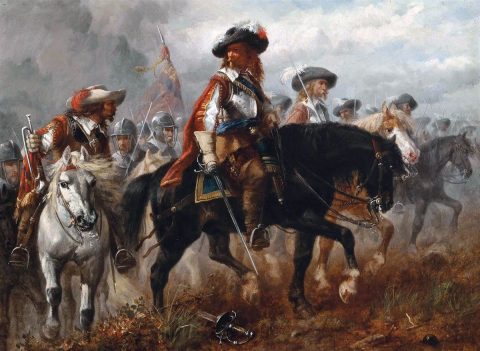World War Two
Published 17 Sep 2020How did Alexander Kerensky react towards the invasion of the Soviet Union? How were French musicians working during the war? How did Germans get to Africa in 1940? Find out from Indy the answers to all these questions in Out of the Foxholes!
Join us on Patreon: https://www.patreon.com/TimeGhostHistory
Or join The TimeGhost Army directly at: https://timeghost.tvFollow WW2 day by day on Instagram @ww2_day_by_day – https://www.instagram.com/ww2_day_by_day
Between 2 Wars: https://www.youtube.com/playlist?list…
Source list: http://bit.ly/WW2sourcesHosted by: Indy Neidell
Written by: Rune Væver Hartvig
Director: Astrid Deinhard
Producers: Astrid Deinhard and Spartacus Olsson
Executive Producers: Astrid Deinhard, Indy Neidell, Spartacus Olsson, Bodo Rittenauer
Creative Producer: Joram Appel
Post-Production Director: Wieke Kapteijns
Research by: Rune Væver Hartvig
Edited by: Karolina Dołęga
Sound design: Marek Kamiński
Map animations: Karolina DołęgaColorizations by:
– Mikołaj Uchman
– Klimbim
– Carlos Ortega Pereira, BlauColorizations – https://www.instagram.com/blaucolorizations
– Norman Stewart – https://oldtimesincolor.blogspot.com/Visual Sources:
– Bundesarchive
– Fortepan: 146645
– Library of Congress
– United States Holocaust Memorial Museum
– US National Archive
– B. Huber from German Wikipedia
– Tigidoulaïlaï from Wikimedia
– Picture of Jacques Prévert courtesy of Ruth Bessoudo Courvoisier
– Icons from The Noun Project by: iconsphere, Luke Anthony, Jordan
Alfarishy, Gan Khoon Lay , Alice Design, ProSymbols & Hada Arkanda.Music:
“The Inspector 4” – Johannes Bornlöf
“Moving to Disturbia” – Experia
“Castles of France” – Cercles Nouvelles
“Memories of Paris” – Trabant 33
“March Of The Brave 10” – Rannar SillardArchive by Screenocean/Reuters https://www.screenocean.com.
A TimeGhost chronological documentary produced by OnLion Entertainment GmbH.
September 18, 2020
From innovation to absolutism — English inventors and the Divine Right of Kings
In the latest Age of Invention newsletter, Anton Howes looks at how innovations during the late Tudor and Stuart eras sometimes bolstered the monarchy in its financial battles with Parliament (which, in turn, eventually led to actual battles during the English Civil War):

King Charles I and Prince Rupert before the Battle of Naseby 14th June 1645 during the English Civil War.
19th century artist unknown, from Wikimedia Commons.
The various schemes that innovators proposed — from finding a northeast passage to China, to starting a brass industry, to colonising Virginia, or boosting the fish industry by importing Dutch salt-making methods — all promised to benefit the public. They were to support the “common weal”, or commonwealth. And to a certain extent, many projects did. The historian Joan Thirsk did much pioneering work in the 1970s to trace the impact of various technological or commercial projects, revealing that even something as mundane as growing woad, for its blue dye, could have a dramatic impact on local economies. With woad, the income of an ordinary farm labouring household might be almost doubled, for four months in the year, by employing women and children. In the late 1580s, the 5,000 or so acres converted to woad-growing in the south of England likely employed about 20,000 people. That may seem small today, but at a time when the population of a typical market town was a paltry 800 people, even a few hundred acres of woad being cultivated here or there might draw in workers from across the whole region. In the mid-sixteenth century, even the entire population of London had only been about 50-70,000. As Thirsk discovered, innovative projectors also sometimes fulfilled their other public-spirited promises, for example by creating domestic substitutes for costly imported goods, or securing the supplies of strategic resources.
But the ideal of benefiting the commonwealth could also, all too frequently, be elided with serving the interests of the Crown. Projectors might promise the monarch a direct share of an invention’s profits, or that a stimulated industry would result in higher income from tariffs or excise taxes. Increasingly, they proposed schemes that were almost entirely focused on maximising state revenue, with little evidence of new technology. They identified “abuses” in certain industries — at this remove, it’s difficult to tell if these justifications were real — and asked for monopolies over them in order to “regulate” them, then making money by selling licences. Last week I mentioned patents over alehouses, and on playing cards. They also offered to increase the income from the Crown’s property, for example by finding so-called “concealed lands” — lands that had been seized during the Reformation, but which through local resistance or corruption had ostensibly not been paying their proper rents. The projectors would take their share of the money they identified as “missing”. And they proposed enforcing laws, especially if the punishments involved levying fines or confiscating property. The projectors offered to find the lawbreakers and prosecute them, after which they’d take their share of the financial punishments.
Projectors thus came to present themselves as state revenue-raisers and enforcers, circumventing all of the traditional constraints on the monarch’s money and power. They provided an alternative to Parliaments, as well as to city corporations and guilds, in raising money and propagating their rule. Taking it a step further, projectors offered the tantalising possibility that kings like James I and Charles I might rule through proclamation and patents alone, without having to answer to anybody. They thus experimented with absolutism for much of 1610-40, only occasionally being forced to call Parliament for as briefly as possible when the pressing financial demands of war intervened.
In the process, with the growing multitude of projects — a few bringing technological advancement, but many merely lining the pockets of courtier and king — the designation “projector” became mud. It was as if, today, the Queen were to use her prerogative to grant a few of her courtiers monopolies on collecting all traffic fines, or litter penalties, to be rewarded solely on commission. Or if she were to award an unscrupulous private company the right to award all alcohol-selling licences (perhaps on the basis that underage drinking was becoming common). The country would soon be awash with hidden speed cameras and incognito litter wardens, and the price of alcohol would go through the roof. The people responsible would not be popular. A recent book by economic historian Koji Yamamoto meticulously charts the changing public perceptions of projects, describing the ways in which innovators then struggled, for decades, to regain the public’s trust.
“The Last Battle” – The Strangest Fight of WWII – Sabaton History 085 [Official]
Sabaton History
Published 17 Sep 2020On the 5th of May 1945, the Second World War in Europe is literally in its final days. As the German lines and Nazi state collapse into free fall, some Nazi hardliners remain fighting until the very moment surrender is announced. At Castle Itter, the lines are blurred as US and German soldiers fight side by side in a medieval castle, home to some of the highest profile prisoners of the war.
Support Sabaton History on Patreon: https://www.patreon.com/sabatonhistory
Listen to “The Last Battle” on the album The Last Stand:
https://music.sabaton.net/TheLastStandWatch the Official Lyric Video of “The Last Battle” here:
https://www.youtube.com/watch?v=BwfJs…Listen to Sabaton on Spotify: http://smarturl.it/SabatonSpotify
Official Sabaton Merchandise Shop: http://bit.ly/SabatonOfficialShopHosted by: Indy Neidell
Written by: Markus Linke and Indy Neidell
Directed by: Astrid Deinhard and Wieke Kapteijns
Produced by: Pär Sundström, Astrid Deinhard and Spartacus Olsson
Creative Producer: Maria Kyhle
Executive Producers: Pär Sundström, Joakim Brodén, Tomas Sunmo, Indy Neidell, Astrid Deinhard, and Spartacus Olsson
Community Manager: Maria Kyhle
Post-Production Director: Wieke Kapteijns
Editor: Iryna Dulka
Sound Editor: Marek Kaminski
Maps by: Eastory – https://www.youtube.com/c/eastory
Archive: Reuters/Screenocean – https://www.screenocean.com
Sources:
– Photos of the Itter Castle: Sammlung Risch-Lau, Vorarlberger Landesbibliothek
All music by: SabatonAn OnLion Entertainment GmbH and Raging Beaver Publishing AB co-Production.
© Raging Beaver Publishing AB, 2019 – all rights reserved.
Was the Wuhan Coronavirus (aka Covid-19) created in a Chinese lab?
Rowan Jacobsen profiles the scientist who believes, based on her own research, that the Wuhan Coronavirus was not a naturally occurring mutation and was instead deliberately created in a Chinese government lab:
It wasn’t long before she came across an article about the remarkable stability of the virus, whose genome had barely changed from the earliest human cases, despite trillions of replications. This perplexed Chan. Like many emerging infectious diseases, COVID-19 was thought to be zoonotic — it originated in animals, then somehow found its way into people. At the time, the Chinese government and most scientists insisted the jump had happened at Wuhan’s seafood market, but that didn’t make sense to Chan. If the virus had leapt from animals to humans in the market, it should have immediately started evolving to life inside its new human hosts. But it hadn’t.
On a hunch, she decided to look at the literature on the 2003 SARS virus, which had jumped from civets to people. Bingo. A few papers mentioned its rapid evolution in its first months of existence. Chan felt the familiar surge of puzzle endorphins. The new virus really wasn’t behaving like it should. Chan knew that delving further into this puzzle would require some deep genetic analysis, and she knew just the person for the task. She opened Google Chat and fired off a message to Shing Hei Zhan. He was an old friend from her days at the University of British Columbia and, more important, he was a computational god.
“Do you want to partner on a very unusual paper?” she wrote.
Sure, he replied.
One thing Chan noticed about the original SARS was that the virus in the first human cases was subtly different — a few dozen letters of genetic code — from the one in the civets. That meant it had immediately morphed. She asked Zhan to pull up the genomes for the coronaviruses that had been found on surfaces in the Wuhan seafood market. Were they at all different from the earliest documented cases in humans?
Zhan ran the analysis. Nope, they were 100 percent the same. Definitely from humans, not animals. The seafood-market theory, which Chinese health officials and the World Health Organization espoused in the early days of the pandemic, was wrong. Chan’s puzzle detectors pulsed again. “Shing,” she messaged Zhan, “this paper is going to be insane.”
In the coming weeks, as the spring sun chased shadows across her kitchen floor, Chan stood at her counter and pounded out her paper, barely pausing to eat or sleep. It was clear that the first SARS evolved rapidly during its first three months of existence, constantly fine-tuning its ability to infect humans, and settling down only during the later stages of the epidemic. In contrast, the new virus looked a lot more like late-stage SARS. “It’s almost as if we’re missing the early phase,” Chan marveled to Zhan. Or, as she put it in their paper, as if “it was already well adapted for human transmission.”
That was a profoundly provocative line. Chan was implying that the virus was already familiar with human physiology when it had its coming-out party in Wuhan in late 2019. If so, there were three possible explanations.
For the record, my strong suspicion is that she is correct about the origins of the virus, but I don’t think it was deliberately released by the Chinese government. I think if it had been deliberate, it would have been much more directly “weaponized” in both delivery mechanism and targeting.
Germany’s Not-So-Light 5cm LeGrW 36 Light Mortar
Forgotten Weapons
Published 2 Sep 2018Sold for $18,400
http://www.patreon.com/ForgottenWeapons
Cool Forgotten Weapons merch! http://shop.bbtv.com/collections/forg…
The 5cm 5CM Leichter Granatwerfer 36 was the standard German light infantry mortar going into World War Two. It was designed by Rheinmetall-Borsig in the mid 1930s and adopted in 1936. It fired a 0.9kg / 2 pound mortar bomb with a range of up to 550 meters. In theory, it occupied the same role as the French Mle 1937 50mm light mortar — except it was far heavier than was practical, and substantially more complex to use. The LeGrW 36 weighed in at a hefty 31 pounds (14kg) – nearly four times as much as its French counterpart.
It was a striker fired design, with a trigger lever and thus did not fire immediately upon a round being loaded. It used adjustments in angle to determine range, with a constant projectile velocity (as opposed to venting a varying amount of propellent gas to adjust range). By the middle of the war, it was being pulled out of front-line use, as its weight and relative complexity made it impractical for its intended role.
If you enjoy Forgotten Weapons, check out its sister channel, InRangeTV! http://www.youtube.com/InRangeTVShow
QotD: Heinlein’s “Crazy Years”
It’s become a thing among Heinlein fans, writers and readers alike. We get together for a good talk, and a glass of wine, and one of us will mention something nuts and the others will go “Well, these are the crazy years.”
Things like the girl who had to remove a decoration from her purse before boarding a plane because the decoration was in the shape of a revolver, though about finger sized and evidently cut in half lengthwise. The TSA thought the ban on guns applied to this too. (Of course, she’d flown with it before, so it was just this TSA station, but nonetheless its rulings were absolute.)
Things like the little deaf boy who can’t sign his name because one of the letters looks like a gun.
Things like kids getting in trouble because of a fictional story they wrote. Things like my younger son – it’s a theme, yes. The boy is lightning rod on his mother’s side. More on that later – getting sent to the school psychiatrist because he used the following sentence in an essay “Some people think I’m crazy.”
[…]
There’s half (half?) of our literature and movies, which glorify behaviors that in real life get you killed or make you a bum. There’s the fact that being thrifty, hard working and honoring your contracts makes you “uncool.” There the fact our women are taught to hate all men and men are finally learning to avoid women. There’s …
You say it in groups of Heinlein fans, and people go “Well, these ARE the crazy years.” And you move on.
Sarah Hoyt, “These Are The Crazy Years”, According to Hoyt, 2013-07-17.







